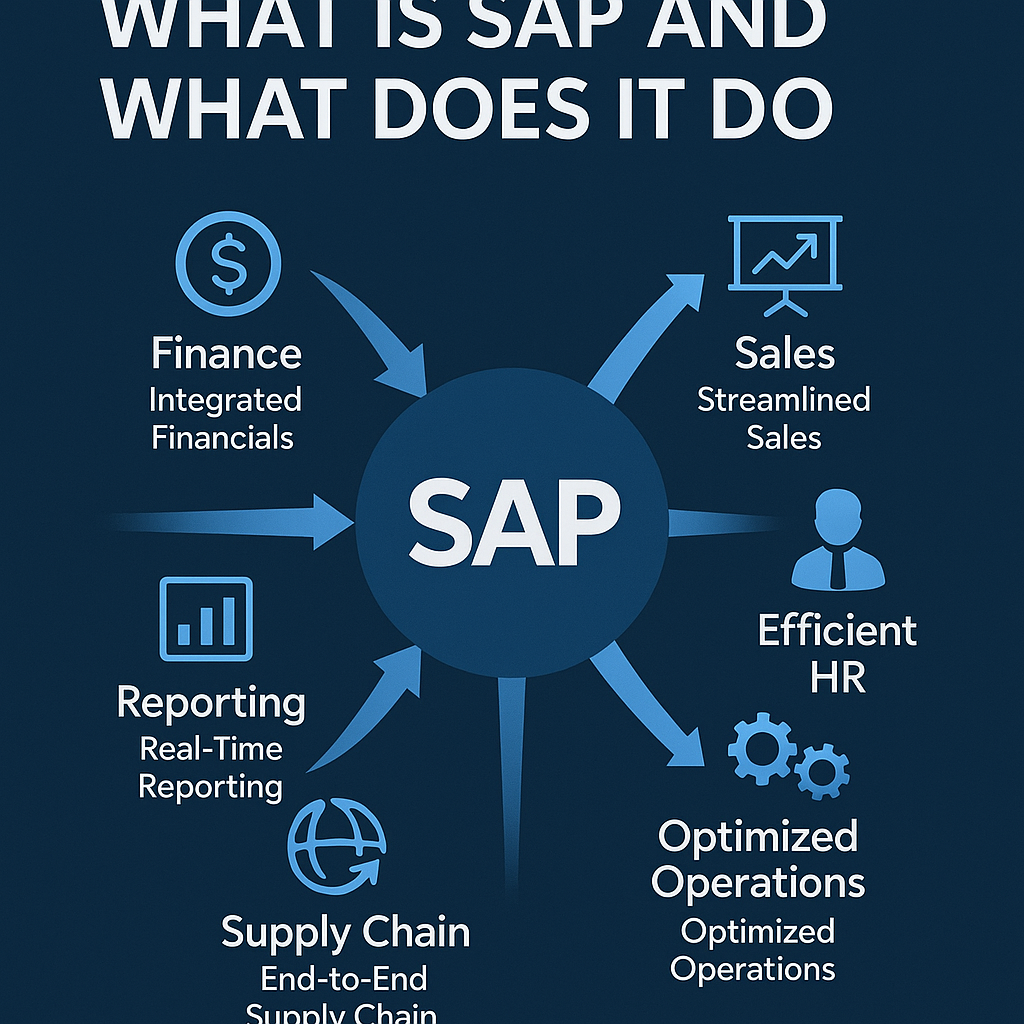In every big SAP project, someone is going to fight the change. It is a guarantee. You are touching every corner of the SAP business, and that kind of shift makes people nervous about their jobs and routines.
People resist because you are altering a business process they have used for years. This is where solid SAP executive sponsorship becomes the most critical piece of the puzzle. It acts as the steady hand guiding the organization through uncertainty.
An SAP project is not just an IT project; it is a complete business transformation. Because of this, only the CEO has the real power to align everyone and hold them accountable. Without that clear leadership, even the best plans fall apart, which makes your approach to SAP executive sponsorship so important.
Need Strategic Level Advice on getting maximum value from your SAP System. Then get our CEO's Guide to SAP
The CEO's Role in SAP Executive Sponsorship

An SAP implementation impacts finance, HR, logistics, sales, and almost every other department. It changes how people perform their jobs day to day and modifies the company's core operational structure. A successful project rewires the company's DNA for growth and efficiency.
Because it is a total business overhaul, the person leading the charge must have authority over every department. That person is the CEO. No one else can unite all these different teams, from the leadership team down, under one single goal.
The CEO's involvement signals the importance of the digital transformation to all key stakeholders. It's their job to chair the steering committee, break ties in key decisions, and relentlessly communicate the vision. They set the tone for the entire organization and the partner ecosystem involved.
I once saw a CEO move his desk right next to mine during a huge Supply Chain Management implementation. He was not just there for show. He sat there every day to send a clear message that this SAP project had his full attention and complete backing.
Why Delegation Alone Doesn't Work
Many times, a CEO kicks off SAP projects and then hands off the sponsorship to the CIO or another VP. It can seem like a smart delegation of duties. But this approach rarely works well in practice.
Those leaders simply do not have the same level of influence across the entire organization. Their incentives are often tied to their own department's performance, not the overall project's success. This misalignment creates drift and allows small problems to grow into major roadblocks.
For example, a VP of Sales might resist a change in how sales commissions are calculated in the new system because it could disrupt their team's quarterly numbers. A CIO, acting as sponsor, lacks the authority to overrule the VP of Sales on a business process issue. Only the CEO can make that final call for the good of the entire company.
A successful SAP project must be driven by the business, not IT. According to a study from McKinsey, strong executive leadership is a primary factor in successful technology adoptions. The CEO's direct involvement signals that this is about a new way of doing business and is central to future success.
How to "Force SAP Down" the Right Way
The phrase "force it down their throat" sounds harsh. But it is about firm, decisive leadership, not being a tyrant. It is about creating a structure where success is the only option and the new system is non-negotiable.
You accomplish this by giving teams a clear Delegation of Authority. This is not just about handing off tasks. It is a combination of responsibility, accountability, and the authority to get things done within a defined scope.
True empowerment means giving people the power to make decisions within their assigned areas. The military uses this model effectively because it creates clear lines of command and action. Everyone on the project team knows their role and what is expected of them.

| Component | Description |
|---|---|
| Responsibility | The specific tasks or outcomes a person is expected to deliver. This is the "what" of their job. |
| Accountability | The ownership of the results. This person answers for the outcome, whether it is a success or a failure. |
| Authority | The power to make decisions, allocate resources, and direct others to complete the responsible tasks. Without authority, responsibility and accountability are meaningless. |
You also need to lead from the front. Make it clear that the SAP solution is the new way the business operates. One of the best ways to do this is to tie performance bonuses directly to project milestones and outcomes.
Pro-Tip 1: Lead from the Front—Be the Visible Sponsor
Make your involvement tangible. Attend key meetings, communicate regularly about project milestones, and consistently reinforce the project’s value. Visible, hands-on executive sponsorship eliminates uncertainty and speeds user adoption.
When people's paychecks are linked to the project's success, you see a dramatic shift in focus and urgency. It changes the entire conversation from "if" to "how." A proper profit-driven business strategy depends on this kind of alignment for all major initiatives.
Pro-Tip 2: Align Incentives for True Buy-In
Tie performance bonuses and advancement directly to SAP project milestones and adoption outcomes. This practical alignment across the leadership team and workforce ensures everyone is focused on business transformation—not just technology delivery.
The leadership team should also be the first to adopt the new tools. If the CEO requests reports, they should come from the new SAP Analytics Cloud, not from an old spreadsheet. This visible adoption demonstrates commitment and eliminates any ambiguity about the company's direction.
Managing SAP Rollouts in Acquisitions
This leadership model is especially important when you are dealing with mergers and acquisitions. For private equity or VC firms, consolidating operations onto a single SAP system is a fast track to better ROI. Think of the savings you can get from centralized procurement, harmonized business data, and improved asset management.
When you acquire a new company, you often have to push your SAP business suite onto them quickly. This is what some call a "cram-down." You are integrating different cultures, processes, and systems, which always causes friction and resistance.
The SAP Business Technology Platform can be a powerful asset here, helping to integrate legacy applications and data from the acquired company with your core SAP S/4HANA system. Utilizing modern user interfaces like SAP Fiori can also ease the transition and improve employee experiences. These technology platform tools streamline the technical part of the merger.
CEOs of these newly acquired companies need to adapt fast. Things like data transparency and aligned procurement are not optional; they directly impact the investment's success. For example, using the SAP solution for Materials Management and Supplier Relationship Management to centralize buying across different industries can deliver huge savings for the supply chain.
This change often disrupts long-standing relationships between local buyers and their suppliers. It can be a tough pill to swallow. Without forceful, clear direction from the top, local teams will find a million reasons why their old way is better for their specific situation.
Lessons from 27+ Years of SAP Leadership
I have spent more than two decades in the SAP space. I have been a part of over 230 pre-sales events and managed around 38 SAP projects. Over the years, a few leadership truths have become crystal clear:
- The CEO Must Be the Visible Sponsor. You cannot delegate this away. Your consistent, visible support from the highest level is what gets everyone on board and shows you are serious about the transformation.
- Align Financial Incentives. From the C-suite to the shop floor, everyone's financial incentives should be tied to project goals. This is the fastest way to get buy-in and is a critical success factor.
- Use Change Management Proactively. Do not wait for problems to pop up. Anticipate resistance and address it head-on with clear communication, training, and support for all key stakeholders. Proactive change management prepares people for what is coming.
- Adapt Your Leadership Style. How you lead a small company through an SAP change is different from how you lead a global enterprise. Your style must fit the company's size, culture, and the complexity of its business processes.
- Some People Will Not Make the Journey. This is a hard truth. Not everyone will be able or willing to adapt to the new system and processes. Sometimes, for the transformation to succeed, certain team members will need to find a new role, perhaps even at another company.
Recognizing that you might need one team to implement the project and another to manage it long-term is also important. The skills required for each phase are very different. You need builders with expertise in methodologies like SAP Activate for the implementation and maintainers focused on release management for the post-go-live phase.
The CEO Takeaway — Leadership Is the Ultimate SAP Module
Thinking about an SAP project only in terms of software is a mistake. An SAP success is not about code or configuration. It is about leadership.
When the CEO leads from the front, everything else falls into line. People, processes, and profits all follow that lead. A successful SAP implementation strategy is built on this foundation of unwavering support from the top.
If you are a CEO or investor, take a hard look at your own commitment. Are you ready to lead this charge personally and make the hard calls? If not, you might want to rethink the whole project before you begin.
Strong leadership is the difference between a successful transformation and a very expensive failure. It is the most critical component of your project management approach. This personal commitment is what makes all the other success factors possible.
Conclusion
Let's be direct. An SAP project without intense, visible SAP executive sponsorship is a project that is likely to fail. You simply cannot hand this responsibility off to someone else in the organization and expect great results. The project sponsor must have the authority to command the entire organization.
The CEO's job is to set the vision, remove roadblocks, and make it clear that this change is permanent. This clarity eliminates debate and focuses the organization on execution. Great project management and a skilled project team can only succeed with this backing.
When your approach to SAP executive sponsorship is that direct and committed, you create the conditions for a project that does not just get done. You drive a transformation that improves your entire business for the better, unlocking new value from your business data and processes.
Get a Customized SAP Value Realization Roadmap.
We are a SAP implementation and support partner. We can implement SAP in your business from 'greenfield' all the way to performing global roll-outs. With our deep Industry Expertise, we can help you uncover hidden value within your SAP system and drive your business to levels of profitability. Please our book a meeting service to get started.




